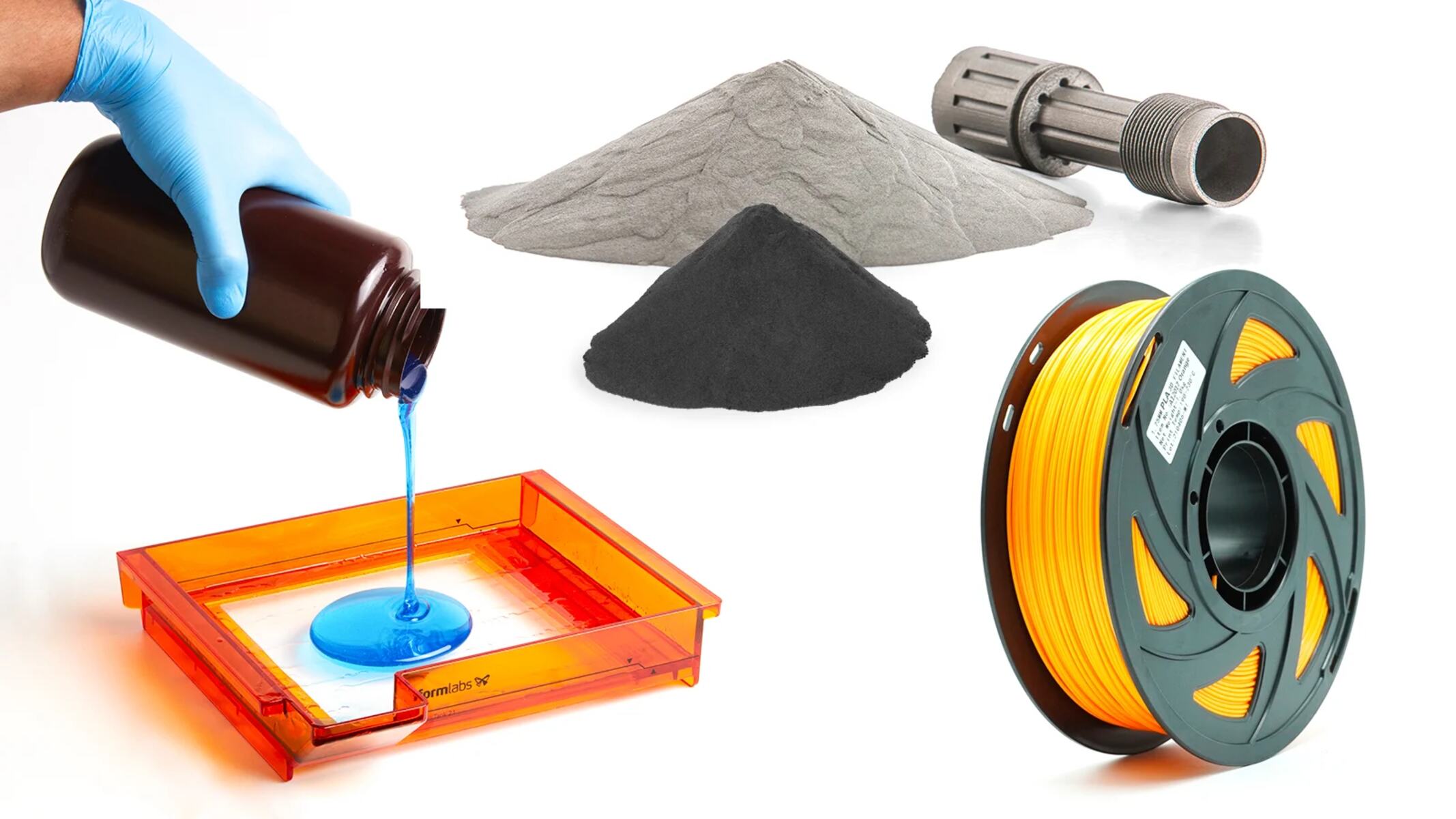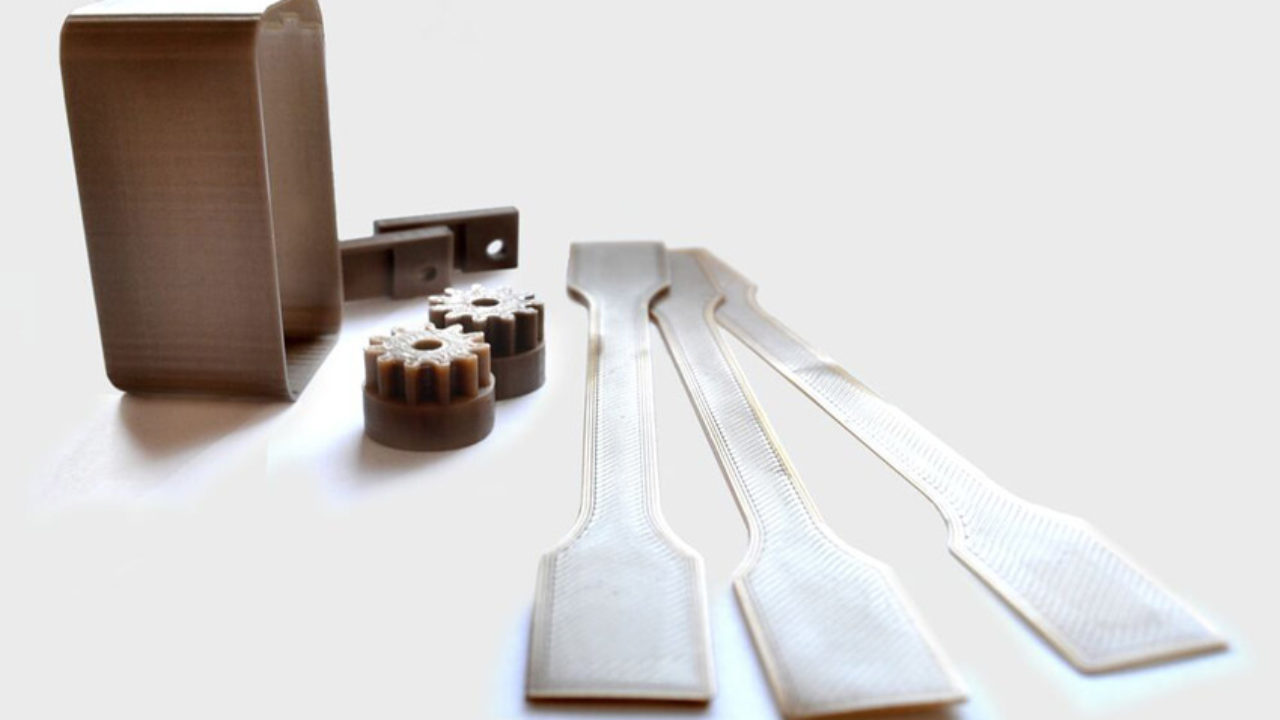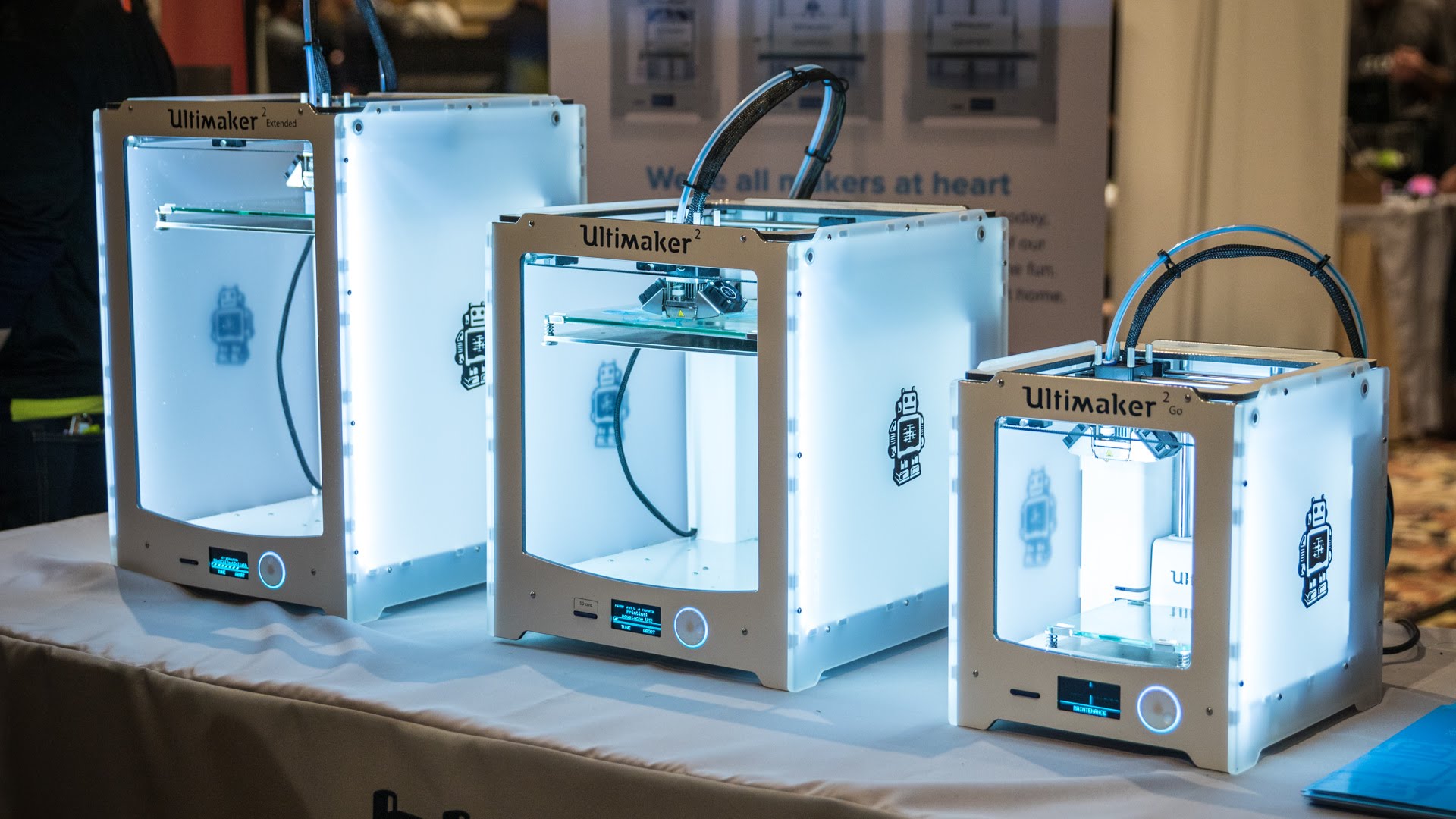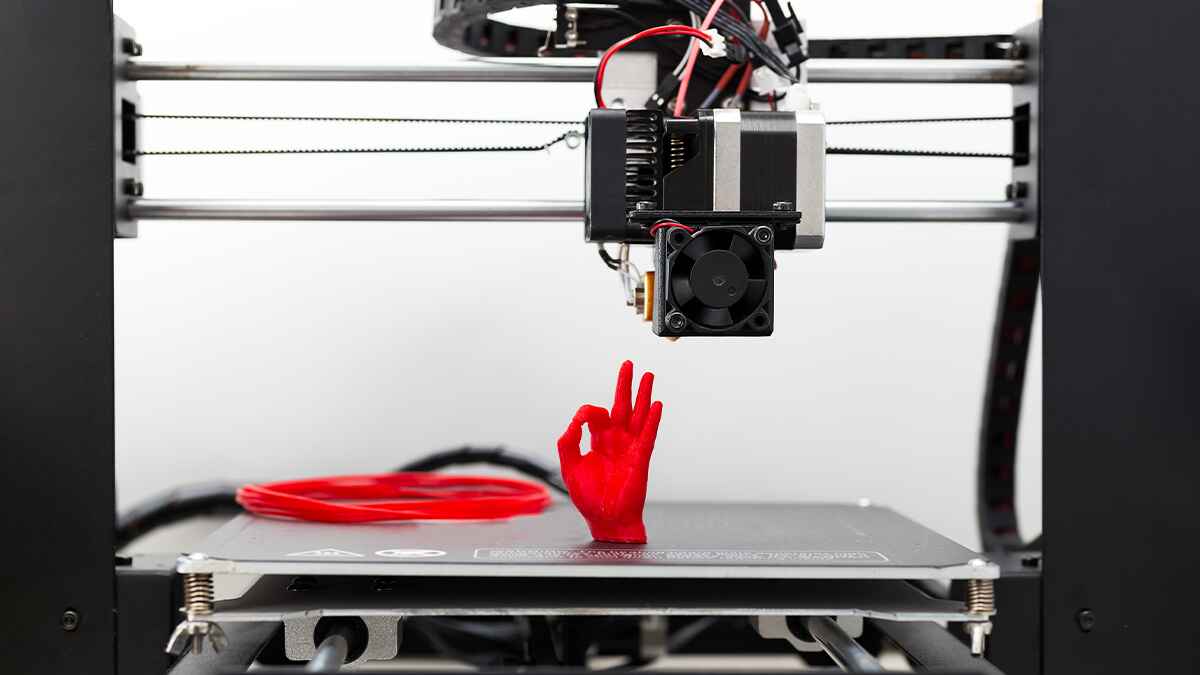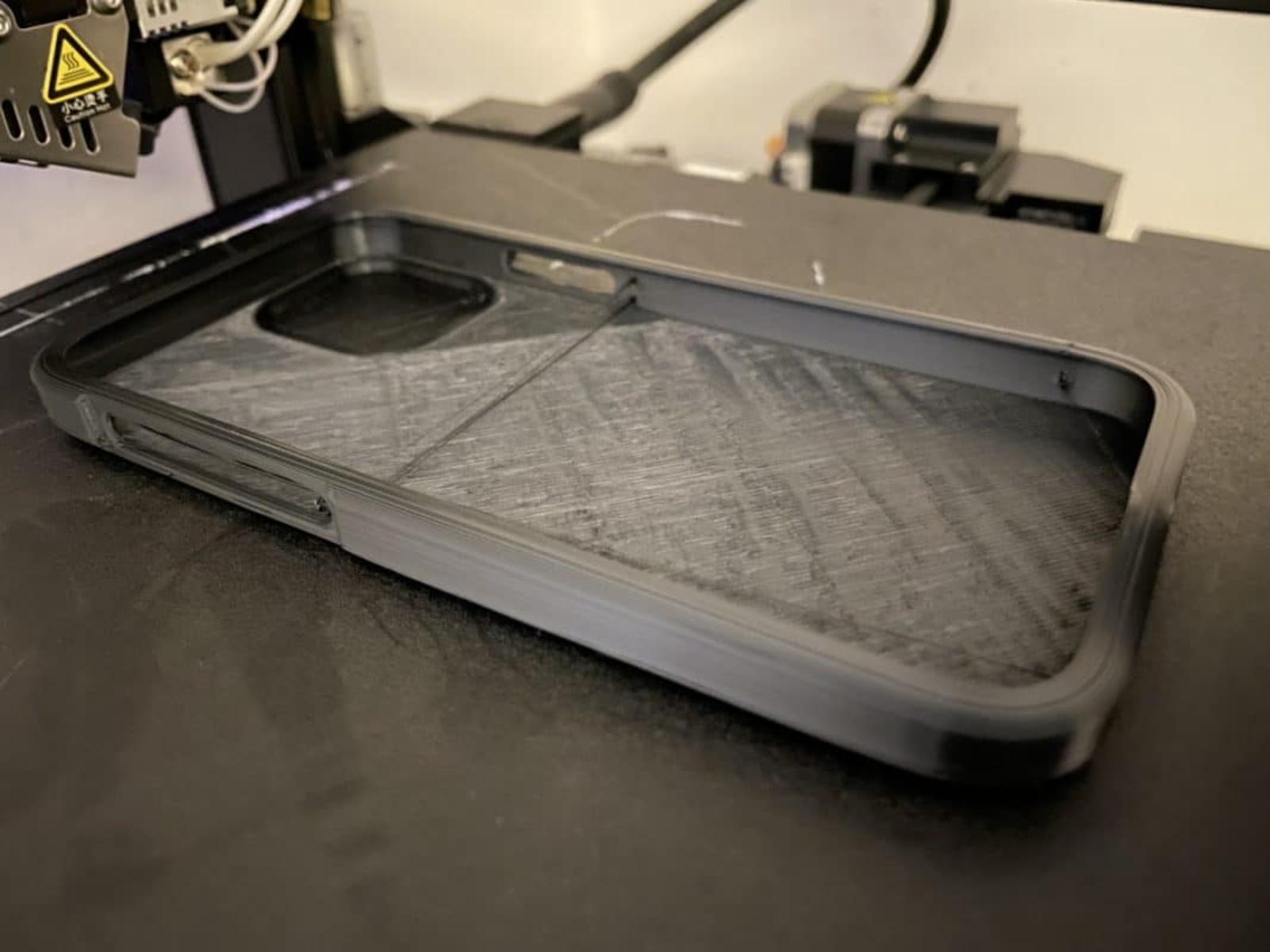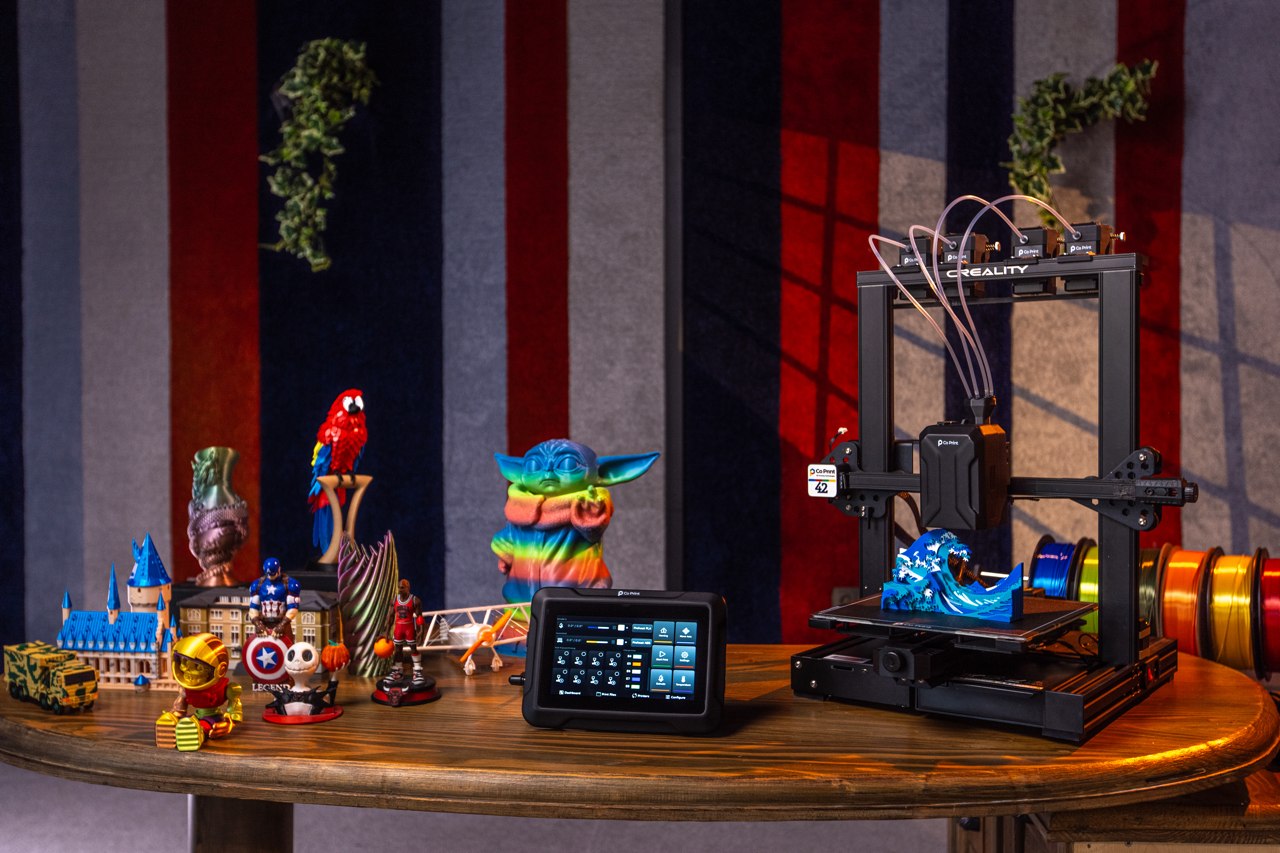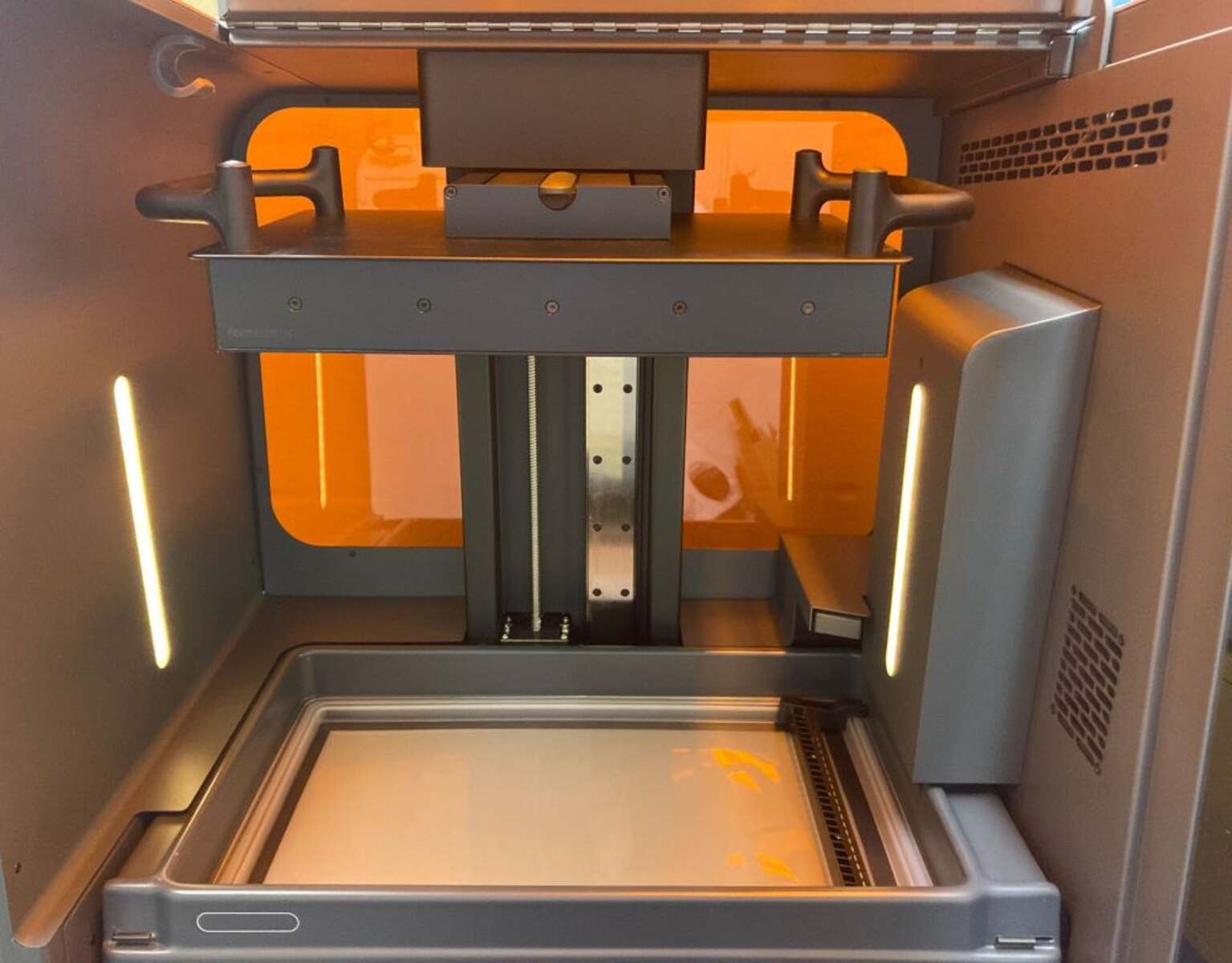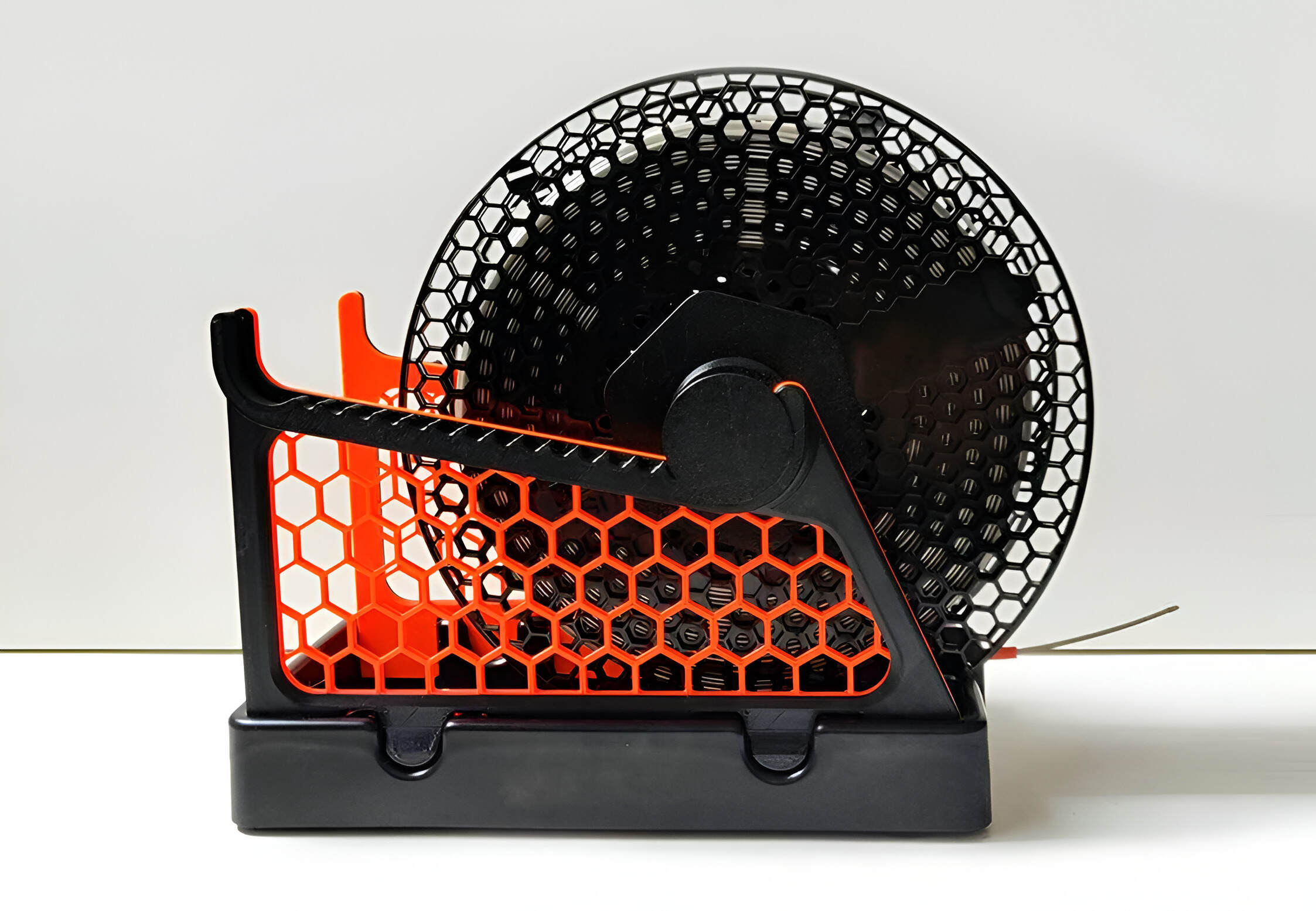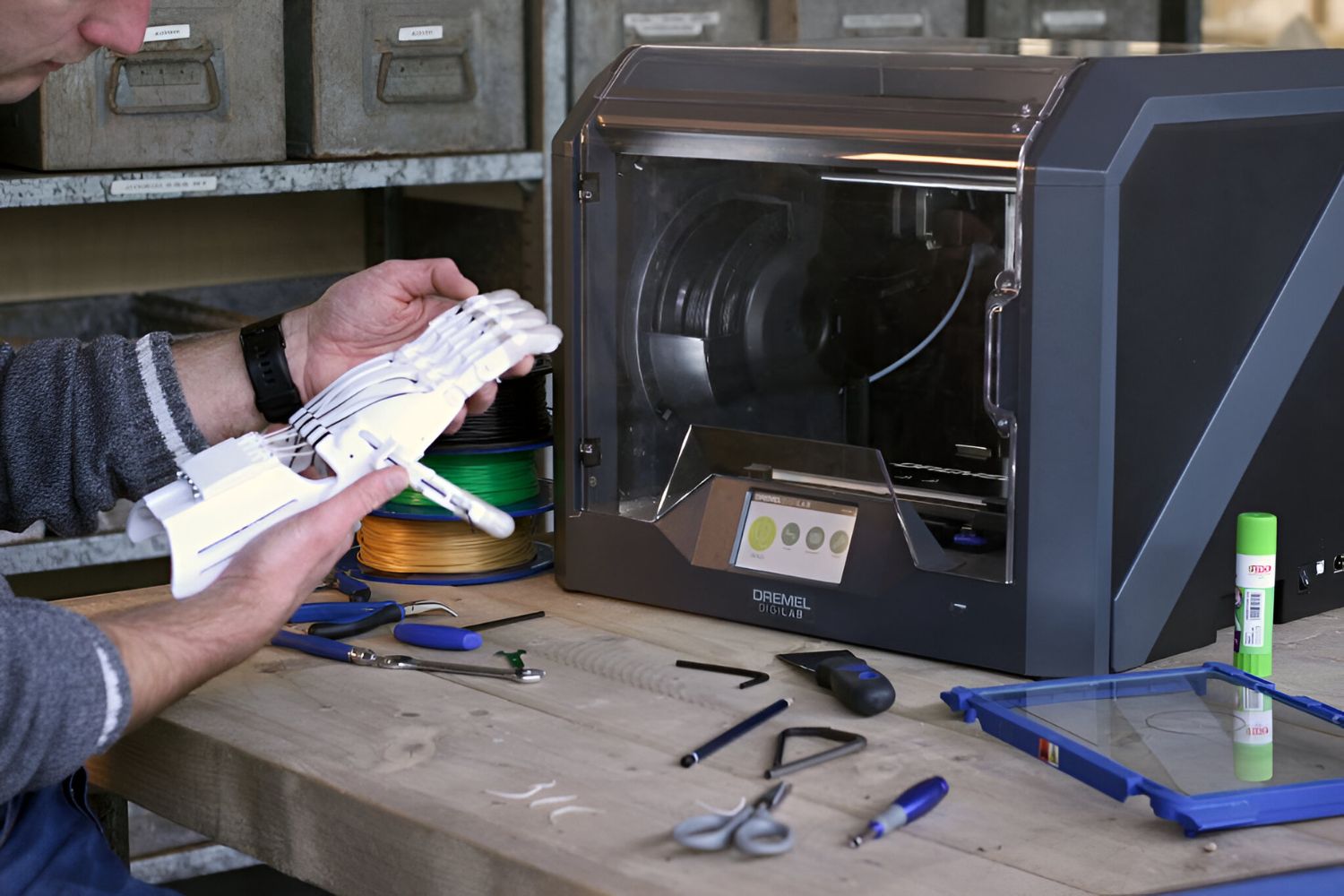Introduction
3D printing technology has rapidly evolved over the years, offering endless possibilities for creating intricate and customized objects. One of the key factors that contribute to the success of a 3D printing project is the choice of materials. The material used in a 3D printer plays a crucial role in determining the strength, durability, and appearance of the final product. With a wide range of materials available, each with its unique properties and characteristics, it can be overwhelming to select the right one for your project.
Plastic filament is the most common material used in 3D printing. It is versatile, cost-effective, and comes in various types, such as ABS, PLA, PETG, and TPU. ABS plastic offers strength and heat resistance, making it suitable for functional parts. PLA plastic, on the other hand, is biodegradable and easy to print, making it popular for prototyping and artistic creations. PETG combines the best of both worlds, offering the strength of ABS and the ease of use of PLA.
In addition to plastic filament, there are also materials like wood filament, metal filament, and carbon fiber filament, which provide unique characteristics and finishes to the printed objects. Wood filament allows for the creation of objects with a natural wood-like texture and appearance, adding a touch of elegance to your creations. Metal filaments, such as copper, aluminum, and stainless steel, give a metallic finish, making them ideal for jewelry and decorative items.
For more specialized applications, there are materials like carbon fiber filament, which provides exceptional strength and rigidity, making it suitable for engineering parts and structural components. PVA and HIPS filaments are used as support materials, allowing for the creation of complex designs with overhangs and intricate details without the need for manual support removal.
When choosing a material for your 3D printing project, it’s essential to consider factors such as the intended use of the object, its desired characteristics, and the printer’s capabilities. Each material has its own advantages and limitations, so it’s crucial to select one that aligns with your specific requirements. By understanding the different types of materials available, you can make an informed decision and unlock the full potential of 3D printing technology.
Plastic Filament
Plastic filament is the most widely used material in 3D printing due to its versatility and affordability. It comes in various types, each offering distinct properties that make them suitable for different applications.
ABS Plastic: Acrylonitrile Butadiene Styrene (ABS) is a widely used plastic filament known for its strength and heat resistance. It is commonly used for functional parts, such as engineering prototypes, automotive components, and household items. ABS is durable, impact-resistant, and can withstand high temperatures, making it suitable for applications that require robustness.
PLA Plastic: Polylactic Acid (PLA) is a biodegradable plastic filament derived from renewable resources, such as cornstarch or sugarcane. It is one of the easiest materials to print with, making it ideal for beginners and hobbyists. PLA is available in a wide range of colors and offers good surface finish and dimensional accuracy. It is commonly used for artistic creations, architectural models, and decorative objects.
PETG Plastic: Polyethylene Terephthalate Glycol (PETG) is a popular choice for 3D printing, combining the strength of ABS with the ease of use of PLA. It offers excellent layer adhesion, low shrinkage, and high impact resistance. PETG is commonly used in applications where durability and flexibility are required, such as mechanical parts, protective gear, and functional prototypes.
TPU Plastic: Thermoplastic Polyurethane (TPU) is a flexible and elastic filament known for its rubber-like properties. It is highly resistant to abrasion, chemicals, and oil. TPU is used in applications that require flexibility, such as phone cases, footwear, and automotive components. Its ability to withstand repeated bending and stretching makes it a popular choice for creating wearable items and functional parts.
These plastic filaments can be used with most consumer-grade 3D printers, making them accessible to a wide range of users. The choice of material depends on the specific requirements of your project, such as strength, flexibility, heat resistance, or biodegradability. By selecting the right plastic filament, you can achieve high-quality and functional prints that cater to your unique needs.
ABS Plastic
Acrylonitrile Butadiene Styrene (ABS) is a popular plastic filament used in 3D printing. Known for its strength, durability, and heat resistance, ABS is widely used in various industries for creating functional parts and prototypes.
One of the primary advantages of ABS is its excellent mechanical properties. It provides high impact resistance, allowing printed objects to withstand rough handling and minor impacts. This makes ABS suitable for applications that require durable and robust parts, such as engineering prototypes, automotive components, and tooling.
ABS also has good heat resistance, enabling it to withstand higher temperatures compared to other plastic filaments. This makes it suitable for applications that undergo heat exposure or require parts to function in high-temperature environments. For example, ABS is commonly used in the production of electronic enclosures, where components generate heat that needs to be dissipated efficiently.
Additionally, ABS has excellent dimensional stability, meaning that printed objects retain their shape and size over time. This makes ABS ideal for applications that require precise measurements and accurate fits, such as connectors, gears, and functional prototypes.
When it comes to post-processing, ABS offers versatility. It can be easily sanded, smoothed, and painted, allowing for further customization and finishing touches on printed objects. It also adheres well to other ABS parts, making it convenient for assembling components together.
However, it’s important to note that ABS can be more challenging to work with compared to other filaments. It requires a heated bed to prevent warping and ensure proper adhesion to the print surface. Additionally, ABS emits fumes during printing, so proper ventilation is necessary to maintain a safe working environment.
In summary, ABS plastic filament provides strength, durability, and heat resistance, making it a popular choice for functional parts and prototypes. Its excellent mechanical properties, dimensional stability, and post-processing versatility offer flexibility in various applications. While ABS may require specific printer settings and ventilation precautions, its advantages outweigh the challenges, making it a reliable material for high-quality 3D prints.
PLA Plastic
Polylactic Acid (PLA) is one of the most commonly used plastic filaments in 3D printing. It is a biodegradable and environmentally friendly material derived from renewable resources, such as cornstarch or sugarcane.
One of the main advantages of PLA is its ease of use. It has low printing temperatures and does not require a heated bed, making it suitable for a wide range of 3D printers. PLA is a popular choice for beginners and hobbyists due to its user-friendly nature.
PLA offers excellent printability, allowing for high-resolution and detailed prints. It has a smooth and shiny surface finish, making it ideal for aesthetic and artistic creations. Additionally, PLA comes in a wide range of vibrant colors and translucencies, providing users with plenty of options for colorful and visually appealing prints.
Another notable characteristic of PLA is its low warping tendency. This means that printed objects made of PLA are less likely to warp or deform during the printing process. PLA is also odorless compared to other filaments, making it a more pleasant material to work with.
While PLA is known for its strength and durability, it is not as impact-resistant as other materials like ABS. Therefore, it may not be suitable for applications that require high mechanical strength or parts that need to withstand heavy loads or impacts.
One aspect that makes PLA attractive to users is its biodegradability. PLA can break down naturally over time when exposed to the right conditions, making it a more environmentally friendly choice compared to non-biodegradable plastics. This makes PLA suitable for disposable or temporary items and reduces the environmental impact associated with waste accumulation.
It’s worth noting that PLA is not suitable for high-temperature applications, as it has a relatively low glass transition temperature. Therefore, it may deform or soften when exposed to elevated temperatures. However, for most typical 3D printing applications, PLA offers sufficient strength and performance.
In summary, PLA plastic filament is a versatile and beginner-friendly option for 3D printing. It offers ease of use, excellent printability, a range of vibrant colors, and biodegradability. While it may not have the same level of mechanical strength as other materials, PLA is ideal for artistic creations, architectural models, and decorative objects.
PETG Plastic
Polyethylene Terephthalate Glycol (PETG) is a popular plastic filament used in 3D printing, known for its combination of strength, flexibility, and ease of use. PETG is a versatile material that offers several advantages, making it suitable for a wide range of applications.
One of the key benefits of PETG is its excellent layer adhesion. PETG prints have strong interlayer bonding, resulting in robust and durable objects. This makes PETG an ideal choice for functional parts, mechanical components, and prototypes that require strength and reliability.
PETG is also known for its low shrinkage during the printing process. Compared to other materials, PETG has minimal warping and shrinking, resulting in more accurate and dimensionally stable prints. This makes it easier to achieve precise geometries and maintain the intended shape and size of the printed object.
In addition to its strength and dimensional stability, PETG offers good impact resistance. It can withstand moderate impacts without cracking or breaking, making it suitable for applications that require durability and resilience. This makes PETG a popular choice for protective enclosures, housings, and parts that may encounter rough handling.
Another advantage of PETG is its transparency and clarity. PETG filament can be printed with excellent clarity, allowing for the creation of transparent or translucent objects. This makes it suitable for applications in sectors such as optics, lighting, and visual displays.
PETG is also resistant to chemicals and has good moisture resistance, making it suitable for applications where exposure to liquids or environmental factors is a concern. It can withstand moderate levels of exposure to oils, solvents, and cleaning agents, making it suitable for functional parts that may come into contact with such substances.
Furthermore, PETG is relatively easy to print with and has a wider temperature range compared to other materials like PLA or ABS. It can be printed at lower temperatures and does not require a heated bed, making it compatible with a wide range of 3D printers. This makes PETG a convenient choice for users who want to experiment with different filaments without major modifications to their printer setup.
In summary, PETG plastic filament offers a balance of strength, flexibility, and ease of use. With excellent layer adhesion, low shrinkage, and good impact resistance, PETG is suitable for a variety of applications, including functional parts, prototypes, and objects that require transparency. Its resistance to chemicals and moisture further adds to its versatility, making it a popular choice among 3D printing enthusiasts.
TPU Plastic
Thermoplastic Polyurethane (TPU) is a flexible and elastic plastic filament widely used in 3D printing. TPU is known for its rubber-like properties, making it suitable for applications that require flexibility, durability, and impact resistance.
One of the main advantages of TPU is its exceptional flexibility. TPU filaments can be stretched and bent without losing their shape or breaking. This makes it ideal for creating objects that need to withstand repeated bending and stretching, such as phone cases, wearable accessories, and flexible hinges.
In addition to flexibility, TPU also offers excellent elasticity. It can return to its original shape after being stretched or compressed, making it suitable for applications that require objects to deform and then regain their shape. This property is beneficial in creating shock-absorbing components and parts that need to maintain their integrity under dynamic conditions.
TPU also offers outstanding impact resistance. It can absorb and distribute forces generated by impacts, protecting the printed object and reducing the risk of damage. This makes TPU a suitable material for protective gear, handles, grips, and other applications that require impact absorption.
Another advantage of TPU is its resistance to abrasion. TPU filaments can withstand wear and tear, making it suitable for applications that involve friction or contact with rough surfaces. Industries such as footwear, robotics, and engineering benefit from TPU’s ability to withstand mechanical stresses and provide long-lasting performance.
TPU is also chemically resistant, making it suitable for applications where exposure to oils, solvents, or chemicals is a concern. It can withstand a certain level of exposure without degrading or losing its properties, expanding its application range further.
TPU can be used in both rigid and flexible parts, offering a wide range of possibilities for design and functionality. It can be combined with other materials to create dual-extrusion prints, adding versatility and complexity to the final product.
It’s important to note that TPU can be a bit challenging to print with due to its flexible nature. It requires specific printer settings, such as slower print speeds and retraction adjustments, to achieve optimal results. However, once the correct parameters are dialed in, TPU can provide impressive results and open up new opportunities for creative and functional 3D prints.
In summary, TPU plastic filament offers flexibility, elasticity, impact resistance, and abrasion resistance. Its ability to withstand repeated bending and stretching makes it ideal for applications that require flexibility, such as phone cases and wearable accessories. With its exceptional properties, TPU is a valuable material in industries that demand durability, performance, and resistance to wear and tear.
Nylon Plastic
Nylon is a versatile and durable plastic filament commonly used in 3D printing. Nylon filaments offer a unique set of properties that make them suitable for a wide range of applications, including functional parts, prototypes, and industrial-grade components.
One of the key advantages of nylon is its excellent strength and toughness. Nylon prints are known for their high tensile strength, allowing them to withstand heavy loads and forces. This makes nylon suitable for applications that require robustness and durability, such as mechanical parts, gears, and structural components.
In addition to its strength, nylon also offers good impact resistance. It can absorb and distribute impact energy, reducing the risk of breakage or damage upon impact. This makes nylon ideal for creating objects that may encounter rough handling or dynamic forces.
Nylon filaments also exhibit excellent chemical resistance. They can withstand exposure to various chemicals without undergoing degradation or losing their structural integrity. This property makes nylon suitable for applications that require resistance to oils, solvents, and other harsh substances.
Another notable characteristic of nylon is its low friction coefficient. Nylon prints have a smooth and slippery surface, reducing the resistance to sliding and facilitating the movement of parts. This makes nylon suitable for applications that involve sliding or moving components, such as bearings, bushings, and mechanical linkages.
Nylon has good thermal properties, offering high melting temperatures and heat resistance. This allows nylon prints to withstand elevated temperatures without softening or deforming. As a result, nylon is suitable for applications that involve exposure to heat or hot environments.
It’s worth noting that nylon filaments do require specific printer settings and conditions for successful printing. They tend to absorb moisture from the surrounding environment, which can negatively affect print quality. Therefore, it’s essential to store and handle nylon filaments properly to maintain their dryness and prevent moisture-related issues during printing.
In summary, nylon plastic filament offers an excellent combination of strength, impact resistance, chemical resistance, low friction, and heat resistance. These properties make it a versatile material for a wide range of applications, from functional parts to industrial-grade components. By selecting nylon as your 3D printing material, you can achieve durable and reliable prints that meet the demanding requirements of various industries.
Wood Filament
Wood filament is a unique and fascinating material used in 3D printing, offering the ability to create objects with a natural wood-like texture and appearance. Wood filaments consist of a mixture of polymer and finely ground wood particles, giving the printed objects an authentic wood grain finish.
One of the main advantages of wood filament is its aesthetic appeal. The printed objects have a warm and natural appearance that closely resembles real wood. This makes wood filament a popular choice for creating decorative items, architectural models, and artistic creations that require a touch of elegance and authenticity.
Wood filaments come in various wood types, such as pine, birch, and bamboo, allowing users to choose the desired wood grain pattern and texture for their prints. This variety adds diversity and customizability to the final outcome, catering to different design preferences and requirements.
Similar to real wood, printed objects made with wood filament can be post-processed just like natural wood. They can be sanded, stained, and varnished to enhance the wood-like appearance further. This post-processing capability provides additional opportunities for personalization and adds a layer of craftsmanship to the final product.
Wood filament also gives users the ability to infuse their prints with a mild, natural wood scent. The pleasant smell can add to the sensory experience and create an immersive effect, especially when the printed object is functional or decorative and placed in a room or display area.
As with any filament, there are considerations when using wood filament. It’s important to note that wood filaments require specific printer settings, such as a larger nozzle, due to the presence of wood particles. The wood content in the filament can also affect print speeds and may cause increased wear on the nozzle over time.
It’s important to handle wood filaments with care to prevent clogs or nozzle damage. The wood particles may settle and clog the nozzle if not used or stored properly. Additionally, due to the presence of organic materials, wood filaments may have variations in color and print quality, adding to the unique and natural characteristics of the prints.
In summary, wood filament offers the opportunity to create 3D prints with a realistic wood-like appearance, texture, and even scent. It adds a touch of elegance and authenticity to printed objects, making it ideal for decorative items, architectural models, and artistic creations. By using wood filament, you can bring the beauty of natural wood to your 3D prints and unleash your creativity in new and exciting ways.
Metal Filament
Metal filament is a specialized material used in 3D printing that allows users to create objects with a metallic appearance and properties. It offers a unique opportunity to incorporate the strength, durability, and aesthetic appeal of metals into printed objects.
One of the main advantages of metal filament is its ability to produce prints with a realistic metallic finish. The filaments are infused with fine metal powders, such as copper, aluminum, stainless steel, or bronze, which give the printed objects a metallic appearance. This makes metal filament an excellent choice for creating jewelry, artistic pieces, customized tools, and other objects that require a metallic look.
In addition to its appearance, metal filament also offers some of the properties associated with metals. For instance, metal filament can provide prints with enhanced strength and durability compared to traditional plastic filaments. This makes it suitable for creating functional parts and prototypes that need to withstand high loads or mechanical stresses.
Another advantage of metal filament is its post-processing capabilities. After printing, metal filament prints can be polished, sanded, or even electroplated to achieve a smoother and more refined finish. These post-processing techniques enable users to create objects with a higher level of detail and a more professional appearance.
It’s important to note that metal filament may require specific printer settings and equipment due to the characteristics of the material. For example, metal filaments often require a printer with a dual extruder system or a specialized nozzle to accommodate the metal particles in the filament. Additionally, due to the higher abrasiveness of metal powders, the nozzle and other printer components may experience increased wear and tear.
Furthermore, it’s important to consider the limitations of metal filament. While it can provide a metallic appearance, the prints are not true metal and may not exhibit the same properties as solid metal objects. The printed objects will be relatively lightweight and may lack the same level of thermal and electrical conductivity as their metal counterparts. However, for many applications, the combination of a metallic appearance and enhanced strength is highly desirable.
In summary, metal filament offers the ability to create 3D prints with a realistic metallic appearance and enhanced strength. With their unique aesthetic appeal and some of the properties associated with metals, prints made with metal filaments are ideal for jewelry, artistic creations, customized tools, and functional parts that require a metallic look. By incorporating metal filament into your 3D printing projects, you can achieve stunning results that mimic the beauty and functionality of metals.
Copper Filament
Copper filament is a specialized type of metal filament used in 3D printing that allows users to create objects with the appearance and properties of copper. It offers a unique opportunity to incorporate the rich color, shine, and thermal conductivity of copper into printed objects.
One of the main advantages of copper filament is its ability to produce prints with a realistic copper appearance. The filament is infused with fine copper particles, which give the printed objects a distinct metallic sheen. This makes copper filament an excellent choice for creating decorative items, jewelry, and artistic pieces that require the aesthetic appeal of copper.
In addition to its appearance, copper filament also offers some of the thermal and electrical conductivity properties of copper. This makes it suitable for creating objects that require efficient heat or electrical transfer. For example, copper filament is commonly used to create heat sinks, electrical connectors, and conductive pathways.
Another advantage of copper filament is its post-processing capabilities. After printing, copper filament prints can be polished, sanded, or even patinated to achieve different finishes and shades of copper. This provides users with the ability to customize the appearance of their prints and create unique and personalized objects.
It’s important to note that copper filament may require specific printer settings and equipment due to the characteristics of the material. For instance, copper filament may require a printer with a dual extruder system or a specialized nozzle to accommodate the copper particles in the filament. The higher thermal conductivity of copper may require adjustments in the printing temperature and cooling settings to achieve optimal results.
Furthermore, due to the presence of copper particles, the nozzle and other printer components may experience increased wear and tear. Regular maintenance and nozzle cleaning are important to ensure the longevity and performance of the printer.
While copper filament can provide a close representation of the properties and appearance of copper, it’s important to note that the printed objects are not solid copper. They do not possess the same weight and density as solid copper objects. However, for many applications, the combination of a copper-like appearance, thermal conductivity, and electrical conductivity is highly desirable.
In summary, copper filament allows for the creation of 3D prints with a realistic copper appearance and some of the thermal and electrical conductivity properties of copper. With its aesthetic appeal and functional properties, prints made with copper filament are suitable for decorative objects, jewelry, and applications that require heat or electrical transfer. By incorporating copper filament into your 3D printing projects, you can achieve stunning results and add a touch of elegance with the shimmering beauty of copper.
Aluminum Filament
Aluminum filament is a specialized type of metal filament used in 3D printing that allows users to create objects with the appearance and properties of aluminum. This unique material offers the ability to incorporate the lightweight yet sturdy characteristics of aluminum into printed objects.
One of the main advantages of aluminum filament is its ability to produce prints with a similar appearance to aluminum. The filament is infused with fine aluminum particles, giving the printed objects a metallic sheen and a silver-gray color. This makes aluminum filament an excellent choice for creating functional parts, prototypes, and artistic creations that require the aesthetic appeal of aluminum.
In addition to its appearance, aluminum filament also offers some of the lightweight and corrosion-resistant properties of aluminum. This makes it suitable for applications that require strong yet lightweight components. For example, aluminum filament can be used to create parts for aerospace, automotive, and robotics industries where weight reduction is crucial.
Another advantage of aluminum filament is its post-processing capabilities. After printing, aluminum filament prints can be polished, sanded, or even anodized to achieve a variety of finishes and colors. This allows for further customization and enhancement of the appearance of printed objects, providing flexibility in the final outcome.
It’s important to note that aluminum filament may require specific printer settings and equipment due to the characteristics of the material. For instance, aluminum filament may require a printer with a dual extruder system or a specialized nozzle to accommodate the aluminum particles in the filament. Additionally, due to the higher thermal conductivity of aluminum, adjustments in the printing temperature and cooling settings may be necessary for optimal results.
Furthermore, it’s essential to ensure proper ventilation when working with aluminum filament as the printing process may emit fine aluminum particles or fumes. Safety precautions should be taken to protect against any potential health hazards associated with the emission of aluminum particles during printing.
While aluminum filament allows for the creation of prints with a similar appearance to aluminum, it’s important to note that the printed objects are not solid aluminum. However, for many applications, the combination of the visual appeal, lightweight properties, and corrosion resistance provided by aluminum filament is highly desirable.
In summary, aluminum filament offers the ability to create 3D prints with a similar appearance and some of the properties of aluminum. With its lightweight nature, corrosion resistance, and the option for various post-processing finishes, aluminum filament is suitable for functional parts, prototypes, and artistic creations that require the lightweight yet sturdy characteristics of aluminum. By incorporating aluminum filament into your 3D printing projects, you can achieve visually appealing and functional prints that mimic the qualities of aluminum.
Stainless Steel Filament
Stainless steel filament is a unique metal filament used in 3D printing that allows users to create objects with the appearance and properties of stainless steel. This specialized material offers the ability to incorporate the strength, durability, and corrosion resistance of stainless steel into printed objects.
One of the main advantages of stainless steel filament is its ability to produce prints with a similar appearance to stainless steel. The filament is infused with fine stainless steel particles, giving the printed objects a metallic sheen and a silver-gray color. This makes stainless steel filament an excellent choice for creating functional parts, prototypes, and decorative objects that require the aesthetic appeal of stainless steel.
In addition to its appearance, stainless steel filament also offers the properties of stainless steel. This includes excellent strength, durability, and corrosion resistance. Stainless steel filament prints can withstand harsh environments and exposure to moisture without rusting or corroding, making them suitable for a variety of applications, including marine, automotive, and industrial components.
Another advantage of stainless steel filament is its post-processing capabilities. After printing, stainless steel filament prints can be polished, sanded, or electroplated to achieve different finishes and looks. This allows for further customization and enhancement of the appearance and properties of printed objects, providing flexibility and versatility in the final outcome.
It’s important to note that stainless steel filament may require specific printer settings and equipment due to the characteristics of the material. For instance, stainless steel filament may require a printer with a dual extruder system or a specialized nozzle to accommodate the stainless steel particles in the filament. Additionally, due to the higher thermal conductivity of stainless steel, adjustments in the printing temperature and cooling settings may be necessary for optimal results.
Furthermore, it’s essential to ensure proper ventilation and safety precautions when working with stainless steel filament as the printing process may emit fine stainless steel particles or fumes. Adequate protective measures should be taken to avoid any potential health hazards associated with the emission of stainless steel particles during printing.
While stainless steel filament allows for the creation of prints with a similar appearance and some of the properties of stainless steel, it’s important to note that the printed objects are not solid stainless steel. However, for many applications, the combination of the visual appeal, strength, and corrosion resistance offered by stainless steel filament is highly desirable.
In summary, stainless steel filament offers the ability to create 3D prints with a similar appearance and some of the properties of stainless steel. With its strength, durability, and corrosion resistance, stainless steel filament is suitable for functional parts, prototypes, and decorative objects that require the qualities of stainless steel. By incorporating stainless steel filament into your 3D printing projects, you can achieve visually appealing and durable prints that mimic the strengths of stainless steel.
Carbon Fiber Filament
Carbon fiber filament is a specialized material used in 3D printing that allows users to create objects with the appearance and properties of carbon fiber. This unique filament offers the ability to incorporate the high strength, light weight, and rigidity of carbon fiber into printed objects.
One of the main advantages of carbon fiber filament is its ability to produce prints with a similar appearance to carbon fiber. The filament is infused with fine carbon fibers, giving the printed objects a distinctive black color and a characteristic woven texture. This makes carbon fiber filament an excellent choice for creating parts that require the aesthetic appeal of carbon fiber, such as automotive components, sporting equipment, and aerospace components.
In addition to its appearance, carbon fiber filament also offers the remarkable properties of carbon fiber. Carbon fiber filament prints have exceptional strength-to-weight ratios, making them incredibly strong and lightweight. This makes them suitable for applications that require high strength and rigidity while minimizing weight, such as drones, robotic parts, and structural components.
Another advantage of carbon fiber filament is its excellent stiffness. The carbon fibers embedded in the filament provide exceptional rigidity to the printed objects. This high modulus of elasticity allows the printed parts to retain their shape and resist deformation even under heavy loads, making them ideal for structural applications.
Carbon fiber filament also offers good thermal and electrical conductivity. It can efficiently dissipate heat, making it suitable for heat sinks and thermal management applications. Additionally, carbon fiber filament is electrically conductive, opening up possibilities for creating functional electronic parts and components that require electrical conductivity.
It’s important to note that carbon fiber filament may require specific printer settings and equipment due to the characteristics of the material. Larger nozzle diameters and hardened nozzles are often recommended due to the abrasive nature of carbon fiber. Additionally, adjustments in the printing temperature and cooling settings may be necessary to optimize print quality and adhesion.
Furthermore, it’s essential to ensure proper ventilation and safety precautions when working with carbon fiber filament, as the printing process may emit fine carbon fiber particles. Respiratory protection and proper filtration should be employed to avoid any potential health hazards associated with the inhalation of these particles.
In summary, carbon fiber filament allows for the creation of 3D prints with a similar appearance and outstanding properties of carbon fiber. With its high strength, light weight, and rigidity, carbon fiber filament is suitable for applications that require strong and lightweight parts, such as automotive, aerospace, and robotics. By incorporating carbon fiber filament into your 3D printing projects, you can achieve visually striking and high-performance prints that mimic the characteristics of carbon fiber.
PVA and HIPS Filament
Polyvinyl Alcohol (PVA) and High Impact Polystyrene (HIPS) are support materials commonly used in 3D printing. These filaments allow for the creation of complex designs with overhangs and intricate details by acting as supports that can be easily removed after printing.
PVA filament is a water-soluble material that is compatible with printers that have dual extruders. It is often used as a support material for delicate and complex prints, such as intricate geometries or models with overhangs. PVA supports can be dissolved in water, making post-processing much easier. PVA is particularly useful when printing with materials like PLA or other filaments that cannot be dissolved in water.
HIPS filament, on the other hand, is a dissolvable support material that is compatible with printers that have dual extruders. HIPS is commonly used as a support material for prints created with ABS, as both materials have similar printing temperatures. Similar to PVA, HIPS supports can be dissolved in Limonene, a common solvent used for removing the HIPS material.
One of the main advantages of PVA and HIPS support materials is their ability to provide stable and effective supports during the printing process. They adhere well to the main print material, providing excellent support for overhanging sections and intricate features. Once printing is complete, the supports can be easily dissolved or removed, leaving behind a clean and smooth final print.
PVA and HIPS filaments are biodegradable and eco-friendly, which is an added benefit for those who prioritize sustainability. The remnants can be safely disposed of without causing harm to the environment.
It’s worth noting that proper storage and handling are crucial for PVA and HIPS filaments. They are hygroscopic materials, meaning they absorb moisture from the air. It’s recommended to store them in airtight containers or sealed bags with desiccants to maintain their quality and prevent moisture-related issues during printing.
While PVA and HIPS filaments offer excellent support capabilities, they do have some limitations. The required dual extruder setup might limit their use to printers that have this capability. Additionally, the removal process can be time-consuming, especially for complex prints with intricate support structures.
In summary, PVA and HIPS filaments are valuable support materials for 3D printing. They allow for the creation of complex designs with overhangs and intricate details by acting as temporary supports that can be dissolved or removed. With their ability to provide stable support, easy removal process, and eco-friendly properties, PVA and HIPS filaments are essential tools in achieving high-quality prints without compromising on design complexity.
Conclusion
Choosing the right material for your 3D printing projects is crucial for achieving the desired results. The various types of filaments available, such as plastic, wood, metal, and support materials, offer unique properties and characteristics that cater to different applications and design requirements.
Plastic filaments, such as ABS, PLA, PETG, and TPU, are versatile and widely used for their affordability, ease of use, and range of properties. ABS and PETG offer strength and heat resistance, making them suitable for functional parts and prototypes. PLA is biodegradable and easy to print, perfect for artistic creations and prototypes. TPU provides flexibility and impact resistance, ideal for creating wearable items and functional parts.
Wood and metal filaments offer distinct visual and functional benefits. Wood filament allows for the creation of prints with a natural wood-like appearance, adding elegance to decorative objects and architectural models. Metal filaments, such as copper, aluminum, stainless steel, and carbon fiber, offer options for creating prints with metallic appearances, strength, and unique properties for various applications.
PVA and HIPS filaments provide reliable support materials that enable the creation of complex prints with overhangs and intricate features. These support materials can be easily dissolved or removed to leave behind clean and smooth final prints without damaging the main print material.
Each filament type has its own advantages and considerations when it comes to printer compatibility, storage, print settings, and post-processing techniques. It’s important to research and understand the properties and requirements of each material to achieve the best possible results.
By harnessing the diversity of filament options and leveraging their unique properties, you can unlock the full potential of 3D printing technology. Whether you’re creating functional parts, artistic masterpieces, or prototypes, selecting the right filament will not only determine the quality and performance of your prints but also enhance your overall printing experience. So, explore the world of filaments, unleash your creativity, and enjoy the endless possibilities that 3D printing has to offer!







